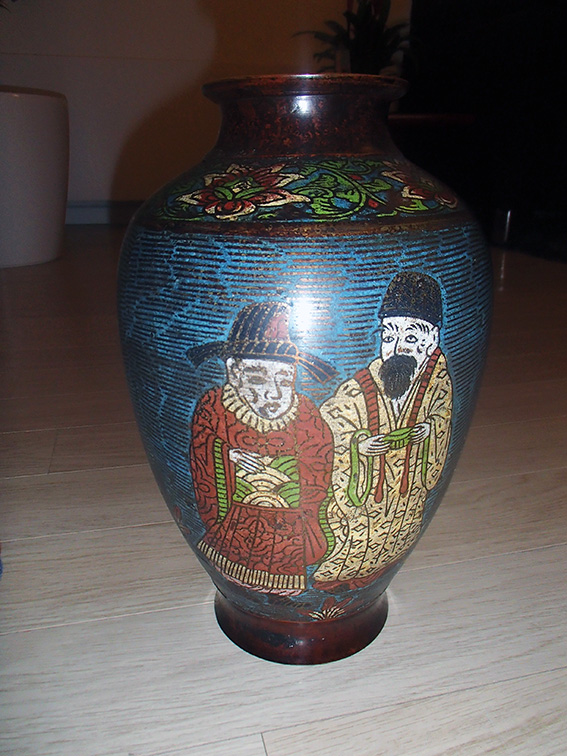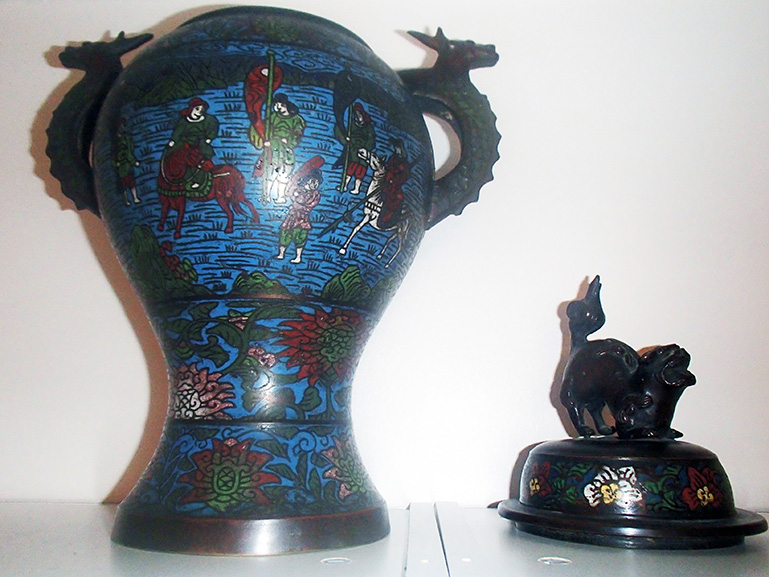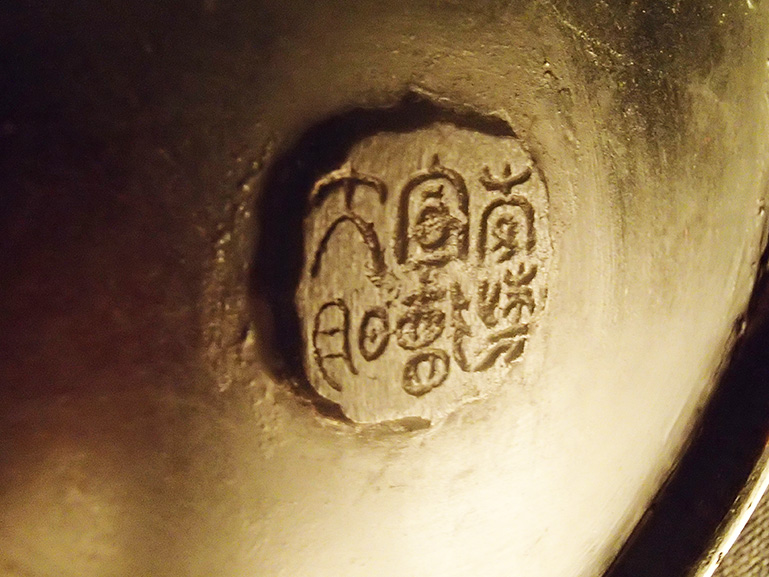
|
Subject:Chinese cloisonné odd signature
Posted By: Lionel Sun, Apr 20, 2014 IP: 82.241.232.198
Hi,
I just inherited three chinese cloisonnes. They were bought as antics by my great grandfather in 1935, in an auction. He often said they could originated from the Ming dynasty.
The signature seal contains indeed the"great Ming" symbols, but the Ming character is written backwards (it is reversed, as if reading it from a mirror).
Does someones know if this is a writing mistake, revealing that the vases - or more probably only the seals - were imitated ? Or were there a period in the Chinese art during which the seals may have contained mirrored characters ? I know that there have been many trends in the seals writings combinaisons - as in the sense of writing for example.
Thanks for your help !
Lionel



|
 Chinese cloisonné odd signature
Chinese cloisonné odd signature  ( China & Japan ) - Lionel - Apr 20, 2014 (03:47 PM)
( China & Japan ) - Lionel - Apr 20, 2014 (03:47 PM)  Re: Chinese cloisonné odd signature - doug - Apr 21, 2014 (11:13 PM)
Re: Chinese cloisonné odd signature - doug - Apr 21, 2014 (11:13 PM)  Re: Chinese cloisonné odd signature - Lionel - Apr 22, 2014 (09:51 AM)
Re: Chinese cloisonné odd signature - Lionel - Apr 22, 2014 (09:51 AM)  Re: Chinese cloisonné odd signature - idcloisonne - Apr 24, 2014 (02:14 PM)
Re: Chinese cloisonné odd signature - idcloisonne - Apr 24, 2014 (02:14 PM)  Re: Chinese cloisonné odd signature - Lionel - Apr 25, 2014 (03:34 AM)
Re: Chinese cloisonné odd signature - Lionel - Apr 25, 2014 (03:34 AM) 

